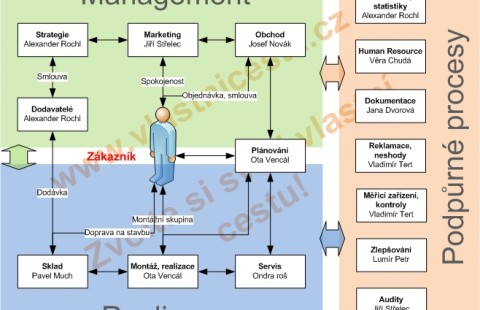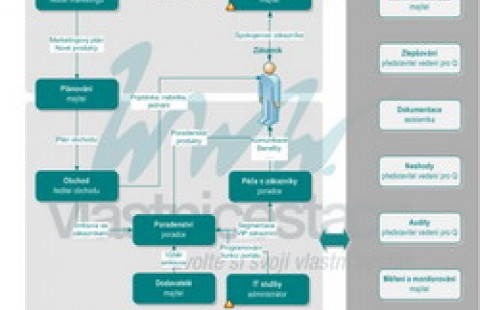We frequently face the situation when the business owners are seeking for the solution of the business problems in the wrong places. Instead of eliminating the causes of the situation, they want quick, universal solutions and immediate elimination of the consequences. They are looking for solutions that will allow them to focus on more and more operative tasks because they are not willing to sit with the current problem. Not every owner or manager is able to understand their strategic role in leading and managing a company. They rather prefer to solve clearly visible problems instead
4 examples where clear solutions do not work
What could be those situations that attract attention? And what are the most common solutions?
"Our staff is unable to organize their time. We send them to a time management training – fixed!"
"We have already written 25 guidelines, each with at least 22 pages, we are superheroes. So we have introduced the process management this way, haven’t we? That will solve everything!"
"Then use the 5x Why tool for that problem. You have to find out who is responsible for that."
"We will buy that software for 3 million, a colleague from the mastermind group implemented it and their sales increased by 25%!"
Let’s have a look at these situations in detail.
The first example - time management
"Too slow" employees shall attend the time-management training. However, half of them will not appear because they have too many operational tasks. The benefits are incremental for the rest because the training does not meet and solve the cause of the problem, which is the operation that the staff is overwhelmed with. Overloaded people make more mistakes, which makes the whole situation even worse. With the instructions like "check your inbox not more than twice a day", the course is just disgusting, because all communication works - surprisingly - via e-mail in their company.
The second example - process management
One of the employees, not trained, mentored, and with no background in the field of business processes, is (in addition to his agenda) obliged to create company guidelines, with no further information or an explanation of the purpose of his work. He creates the documentation, literally from his desk, in accordance with instructions from the company owner: "This is how I want it to be!". The company's management will get consequently to the understanding that "we already have the functioning processes" and that everything has somehow been miraculously resolved. However, the only real output is bunch of documents whose existence almost no one knows about, their reliability is not extremely high, and the purpose is very questionable. And probably there has been no improvement in the processes and activities as such.
The third example - finding the culprit
I don't even want to comment on the example of finding the guilty, but I will do so. There is no good about the business management in this example at all. The lean principles and principles of the efficient company management should be based on management of deviation. What does it mean? It means I do understand my process, its inputs, its outputs, and measure its performance. And then, as soon as I face a non-standard situation, problem, error, customer complaint, etc., I solve that situation through the team tools – and thus look for the cause of the problem. Not look for the guilty person. The 5x Why tool is extremely useful – and if we ask smart enough and if we ask long enough, this tool becomes an outstanding source of information about the company's activities and possible solutions.

Legal aspects of insolvency and reorganization

The Real | Interim Manager for Your Changes

Manager work model

Time management - making use of time effectively

Jak správně tvořit mapu procesů

Modelling and setting the processes and procedures - ISO 9001

Training - preparation of the SWOT analysis and strategy

Company Management System of Quality Step by Step - ISO 9001

Process map acc ISO 9001 - business offer
Fourth example - to buy SW
it is based on recently popular self-help groups of entrepreneurs who share their know-how among themselves, or with the input of experts, who are invited to the group as external consultants. It is essential for entrepreneurs, especially sole business owners, to have access to like-minded entrepreneurs. It is beneficial for them as a safe place to share their concerns and current problems and serves as a great inspiration, too. These expert or mastermind groups do not always meet individual requirements to solve specific problems. It is necessary to be careful - the fact that a tool in another company has solved a problem, which looks very similar to the situation we do face now, does not mean that it is suitable for our us. However, these groups can greatly broaden horizons, helping to see things in a broader context.
Why management solutions don't work
What all these examples have in common? The fact that we do not know that we are working with the cause because there was no detailed analysis of the problem before. Of course, the suggested solutions (apart from finding the guilty…) may be the right way. But we will not know this until we understand the cause.
We should first gather as much objective information as possible for each problem when searching for the solution. The next step is to create a system of solutions and measures to help us work with the problem. What exactly does that mean? We may, for example, create a secure environment in which employees themselves come up with systemic changes, can talk about their ideas, share them, and come up with solutions.
It is important to keep in mind that the permanent solutions are usually not available at a hand. We simply cannot expect to solve all problems immediately and permanently. We must consider the fact that many problems, or better say – their solution, will take much more time than it initially seemed. And it can also happen that the solution itself goes deeply into the structures and situation in the company. Owners and managers in companies must be prepared for all this, and there is also their role. Not in operations and micromanagement.
Managing people and managing business needs effort. Sometimes it is amazing, sometimes it is too hard. I would say that to recognize when we need the help from others, accept it, and ask for a help, is the most difficult thing in our lives.

